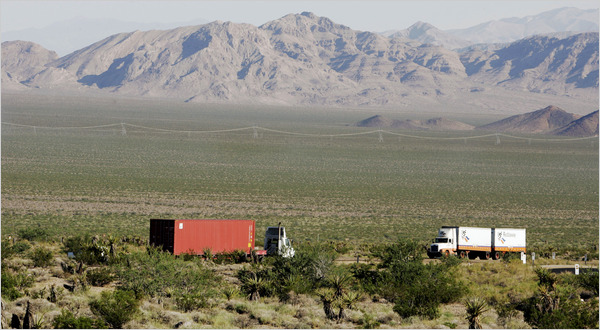The Mojave Desert Under a Media Spotlight
Environmentalism is not always as compatible as you may think. Not every tree hugger out there agrees on the same solution to an environmental issue. The New York Times published a popular article on California’s Mojave Desert called “Desert Vistas Vs. Solar Power,” which discusses an interesting clash of environmental goals. On one side there are the developers that plan on installing solar plants and wind farms in the Mojave, claiming that it’s arguably the best solar land in the world and that the establishment of solar plants is the land’s best utilization. On the other hand, there’s senator Dianne Feinstein, who is determined to protect the land from industrial and economic projects, whether it be for a sustainable cause or not. Her ambition, of course, is for the sake of the much needed natural restoration of the Mojave due to past anthropocentric degradation. For over a decade now, Mrs. Feinstein and the Catellus Development Corporation, with support from the federal government, have had legal property ownership of the land in promise to protect and conserve it for natural habitat revival and to prevent extinction of native species.
This difficult clash of environmental goals remains unresolved to this day, though both sides are slowly becoming more adequate to cooperating with each other. “I strongly believe that conservation, renewable energy development and recreation can and must co-exist in the California desert,” Mrs. Feinstein said in a statement. “This legislation strikes a careful balance between these sometimes competing concerns.” The rationale behind senator Feinstein’s hesitation in letting renewable developers establish solar plants in the Mojave is because of the current delicate state of the desert’s natural habitat. The combination of agricultural development along the Colorado River, grazing, off-road vehicles, military activities and other anthropocentric factors have have left only half of the the Mojave desert naturally intact.
The New York Time’s “Desert Vistas Vs. Solar Power” is among the most popular articles to bring attention to the environmental concerns of southern California deserts. This article is a good sample article of what you would expect your average newspaper reader to stumble upon in the environmental section of the New York Times. However, as I have mentioned in my previous post, I find that environmental articles in newspapers and popular media generally don’t display most of the unsettling information in order to prevent their readers from panicking or distressing over the issue. Rather, these popular media therefore typically remained focused on the science and the politics associated with the issue while leaving out majority of problematic information.
Habitat Destruction
What is not mentioned in the “Desert Vistas Vs. Solar Power” article is how detrimental and afflictive habitat destruction is to native species and to humans, leading to serious health, economic and social problems that are essentially irreversible. Although, the developers conflicting with senator Feinstein are fighting for an environmental cause, the consequences of what Feinstein is trying to avoid has much bigger and long-term consequences that outweigh the consequences of not implementing solar plants in the Mojave.
The consequences of further habitat destruction and exploitation include local or global extinctions of species, leading to loss of biodiversity. Lack of biodiversity will negatively affect the natural flow of ecosystems, which will in turn lead to a decrease in the environment’s economic value to humans. A few of the consequences The New York Times forgot to mention are topsoil erosion, reduction in sustainable yields of fisheries, along with forests and other biotic resources, loss of natural pollinators, sedimentation, which leads to a decrease in water quality, loss of genetic materials that can provide medicinal value, and the list goes on and on. Not to mention, that all of these things carry a massive economic toll. Fisheries and agricultural productivity suffer economic losses of easily up to a hundred billion dollars per year. Furthermore, this introduces the question of food security for hundreds of millions of people. The loss of food security is most threatening where habitat losses are currently greatest and where population growth is the highest. This has serious implications of increasing famine and warfare food and water conflicts intensify in those regions.

